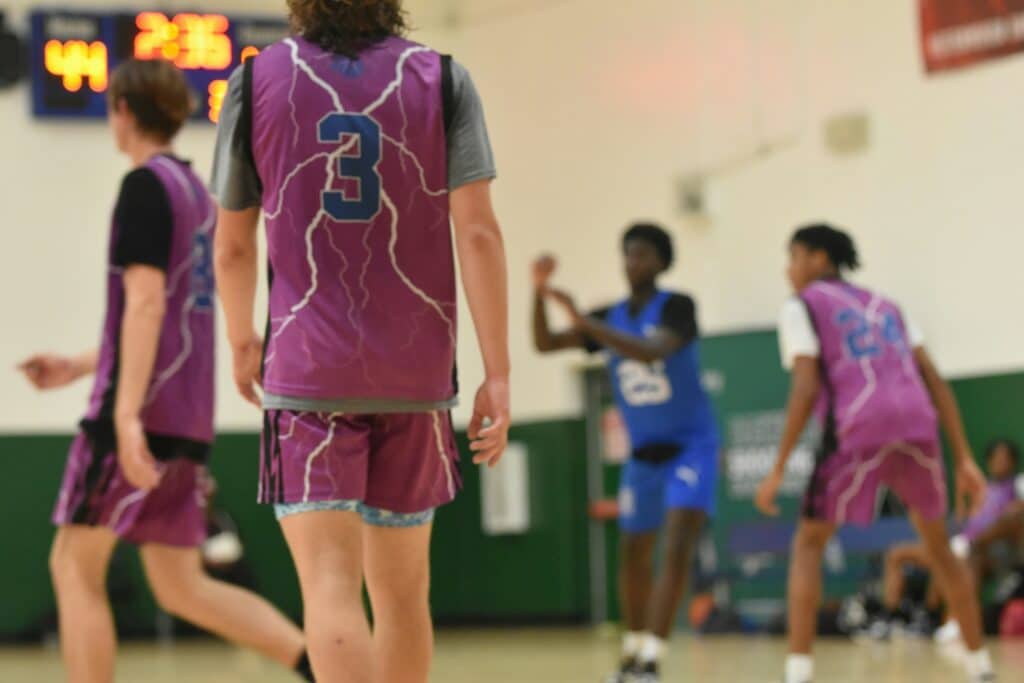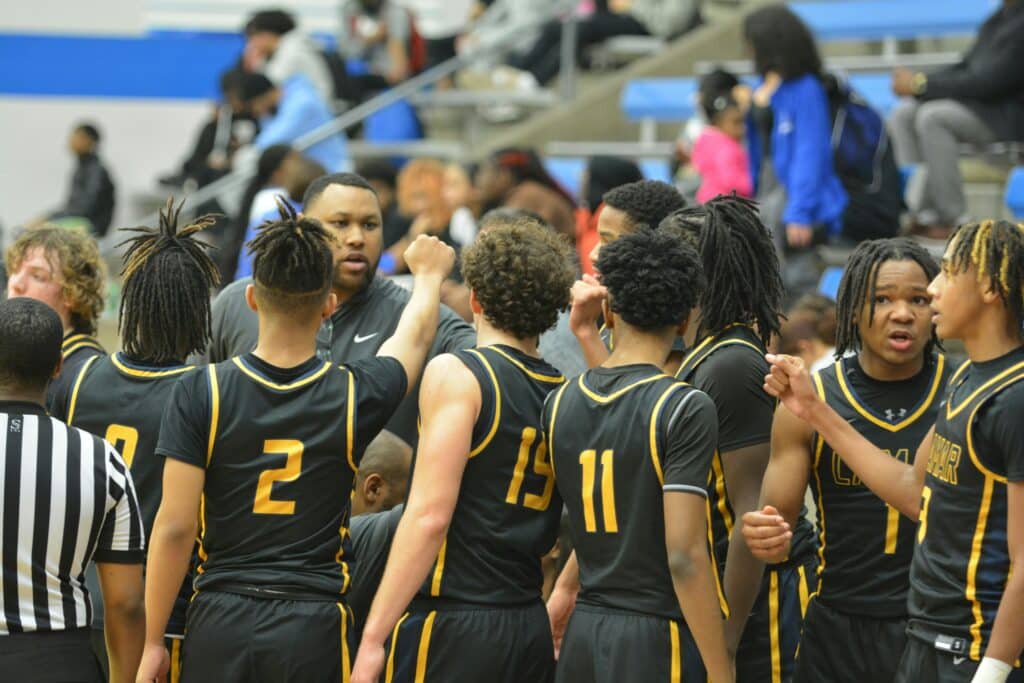
Implementing New Coaching Techniques in Your Program: Introducing Innovation, Gaining Buy-In, and Ensuring Seamless Integration
Implementing new coaching techniques is essential for keeping your basketball program dynamic and effective. Adapting to new methods can lead to improved player performance, better team cohesion, and overall success.
A proactive approach to coaching can foster an environment where both players and coaches are continually learning and evolving.
Here’s a comprehensive guide on how to effectively integrate new coaching techniques into your basketball program.

1. Assess the Need for New Techniques
Before implementing new coaching techniques, it’s crucial to assess the need for change by evaluating the current state of your program.
Identify Areas for Improvement
Start by determining which aspects of your coaching or team performance could benefit from new techniques. This could include:
- Offensive Strategies: Are your current plays effective in breaking down defenses? Are players struggling to execute certain offensive moves?
- Defensive Schemes: Does your team have difficulty containing opponents? Are there gaps in defensive coverage?
- Player Development: Are players progressing in their skill development? Are there specific skills that players are lacking?
Evaluate Player and Team Needs
Consider the specific needs of your players and team. Conduct surveys or hold discussions to gather input on what players feel they need to improve upon. Areas to assess include:
- Skill Gaps: Are there fundamental skills that need to be reinforced or taught?
- Motivational Issues: Are players lacking motivation or focus during practices and games?
- Current Methods: Are the existing coaching methods yielding the desired results?
Research and Stay Updated
Stay informed about the latest coaching techniques, trends, and best practices in basketball. Attend coaching clinics, read coaching literature, and engage with other coaches to gather new ideas.
- Networking: Join coaching organizations and attend conferences to learn from successful coaches and share experiences.
- Continuous Learning: Follow reputable basketball analysts and coaching experts on social media to stay updated on innovative techniques and strategies.

2. Select the Right Techniques
Choosing the right coaching techniques is crucial for ensuring they align with your team’s needs and goals.
Evaluate Techniques
Assess various techniques based on their relevance, effectiveness, and compatibility with your coaching philosophy. Consider techniques that have proven successful with similar teams or players.
- Research Evidence: Look for case studies or testimonials from other coaches who have successfully implemented specific techniques.
- Technique Trials: Experiment with new drills during practice to see how they fit into your existing structure.
Set Clear Objectives
Define what you aim to achieve with the new techniques. Whether it’s improving offensive efficiency, enhancing defensive strategies, or increasing player engagement, having clear objectives will guide your implementation process.
- SMART Goals: Utilize the SMART criteria (Specific, Measurable, Achievable, Relevant, Time-bound) to outline clear goals for each technique.
Consult with Experts
Seek advice from experienced coaches or experts in the field. They can provide insights on how to effectively integrate new techniques and avoid common pitfalls.
- Mentorship: Develop relationships with mentors who can provide guidance based on their experiences.
- Peer Reviews: Join coaching forums or groups to gain diverse perspectives on new techniques.
3. Develop an Implementation Plan
Creating a detailed plan ensures a smooth transition when introducing new techniques.
Create a Timeline
Develop a timeline for implementing the new techniques. This should include phases for introduction, practice, evaluation, and adjustments.
- Phased Approach: Break down the implementation into manageable phases, allowing for gradual adaptation by players and coaches.
- Milestones: Establish specific milestones along the timeline to assess progress and adjust as needed.
Set Milestones
Establish milestones to track progress and measure the effectiveness of the new techniques.
- Performance Indicators: Identify key performance indicators (KPIs) related to the objectives you set, such as improved shooting percentages or reduced turnovers.
- Regular Check-Ins: Schedule regular check-ins to review progress toward the milestones and make any necessary adjustments.
Prepare Resources
Gather the necessary resources, such as training materials, equipment, or additional staff, to support the implementation process.
- Training Manuals: Develop or acquire training materials that clearly outline the new techniques and provide detailed instructions for players and coaches.
- Equipment Needs: Ensure that all necessary equipment is available for practicing new drills or techniques.

4. Introduce Techniques Gradually
Gradually introducing new techniques helps ensure that players and staff can adapt effectively.
Start with a Pilot Program
Test the new techniques with a small group or during a specific part of practice. This allows you to evaluate their effectiveness and make adjustments before full-scale implementation.
- Feedback Loop: After the pilot program, gather feedback from participants to understand what worked well and what did not.
- Fine-Tuning: Make any necessary adjustments based on the pilot’s outcomes before introducing it to the entire team.
Communicate Clearly
Clearly explain the new techniques to your players and staff. Provide context on why these techniques are being introduced and how they will benefit the team.
- Team Meetings: Hold team meetings to discuss the new techniques, ensuring everyone understands their purpose and importance.
- Visual Aids: Use diagrams and videos to illustrate how the new techniques will be implemented in practice.
Provide Training
Offer training sessions or workshops to help players and staff understand and execute the new techniques. Ensure that everyone is comfortable with the changes before fully integrating them.
- Hands-On Training: Facilitate hands-on training sessions where players can practice the techniques in a supportive environment.
- Mentorship for Coaches: Provide additional training or mentorship opportunities for coaches who may need further assistance in implementing new techniques.
5. Monitor and Evaluate Progress
Regularly monitor and evaluate the impact of the new techniques to ensure they are meeting your objectives.
Collect Feedback
Gather feedback from players and staff on how the new techniques are working. This can provide insights into what’s effective and what might need adjustment.
- Surveys: Conduct anonymous surveys to collect honest feedback about the new techniques and their implementation.
- Focus Groups: Organize focus groups with players to discuss their experiences and gather qualitative insights.
Assess Performance Metrics
Use performance metrics to evaluate the effectiveness of the new techniques. Look for improvements in key areas such as scoring, defense, or player development.
- Data Analysis: Track relevant statistics and compare them against previous performance metrics to gauge improvement.
- Game Film Review: Utilize video analysis to assess the execution of new techniques during games, identifying areas for further improvement.
Adjust as Needed
Be prepared to make adjustments based on feedback and performance results. Flexibility is key to ensuring that the new techniques are fully optimized for your team.
- Iterative Process: Treat the implementation of new techniques as an iterative process that involves constant assessment and refinement.
- Responsive Coaching: Stay responsive to players’ needs and the dynamics of the game, making real-time adjustments as necessary.
6. Foster a Positive Environment for Change
Creating a positive environment encourages acceptance and enthusiasm for new techniques.
Promote Open Communication
Encourage open communication about the changes. Address any concerns or questions from players and staff to ensure a smooth transition.
- Open Door Policy: Implement an open-door policy where players and coaches feel comfortable approaching you with their thoughts.
- Regular Check-Ins: Hold regular check-ins to discuss progress, address concerns, and reinforce the positive aspects of the changes.
Celebrate Successes
Recognize and celebrate successes achieved with the new techniques. Acknowledge improvements and contributions to maintain motivation and morale.
- Recognition Events: Organize team meetings or events where you can publicly recognize the efforts of players and staff who embraced the new techniques.
- Milestone Celebrations: Celebrate reaching specific milestones related to the implementation of the new techniques, reinforcing the team’s progress.
Provide Support
Offer support and resources to help players and staff adjust to the new techniques. This could include additional practice time, one-on-one coaching, or motivational support.
- Mentorship Programs: Pair players with mentors who can guide them through the transition and help them develop confidence in using new techniques.
- Access to Resources: Ensure that players and coaches have access to training materials and resources to support their understanding and application of new techniques.

7. Review and Reflect
After a period of implementation, review and reflect on the overall impact of the new techniques.
Conduct a Review
Evaluate the success of the new techniques based on the established objectives and performance metrics. Determine whether the changes have met the desired outcomes.
- Comprehensive Evaluation: Conduct a thorough review of both quantitative and qualitative data to assess the overall effectiveness of the new techniques.
- Identify Best Practices: Highlight the best practices that emerged during the implementation process to inform future changes.
Reflect on Learnings
Reflect on what was learned during the implementation process. Consider what worked well, what challenges were faced, and how future implementations can be improved.
- Team Debrief: Hold a team debrief session where players and coaches can share their experiences and insights regarding the new techniques.
- Continuous Learning: Use the reflection process as a learning opportunity to improve your coaching practices continuously.
Plan for Future Changes
Use the insights gained to plan for future changes or enhancements. Continuous improvement is key to maintaining a successful coaching program.
- Future Innovations: Stay open to exploring other new coaching techniques that could further enhance your program.
- Proactive Approach: Develop a proactive approach to coaching that encourages ongoing learning and adaptation.
Implementing New Coaching Techniques in Your Program Conclusion
Implementing new coaching techniques involves assessing the need for change, selecting appropriate techniques, developing a detailed plan, introducing changes gradually, monitoring progress, fostering a positive environment, and reviewing the overall impact.
By following these steps, you can effectively integrate new techniques into your basketball program, leading to improved performance and continued success.



